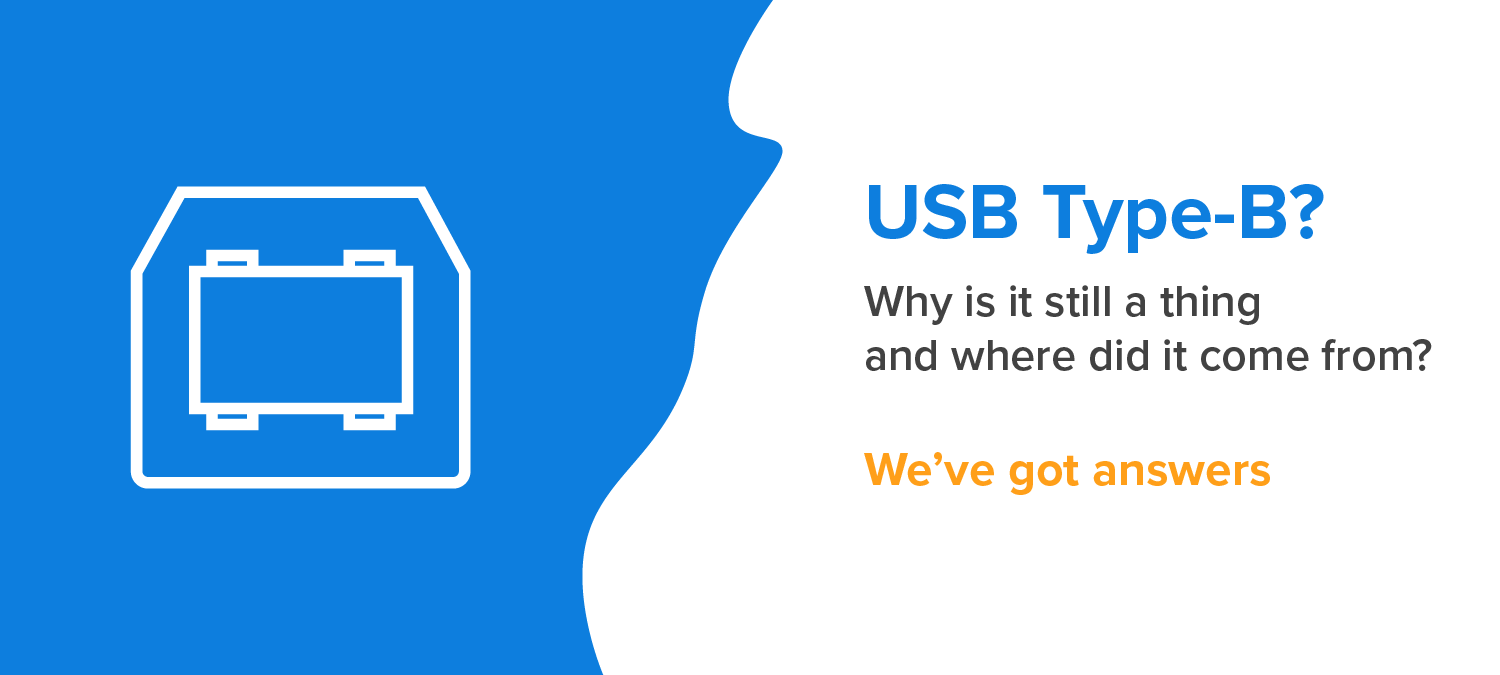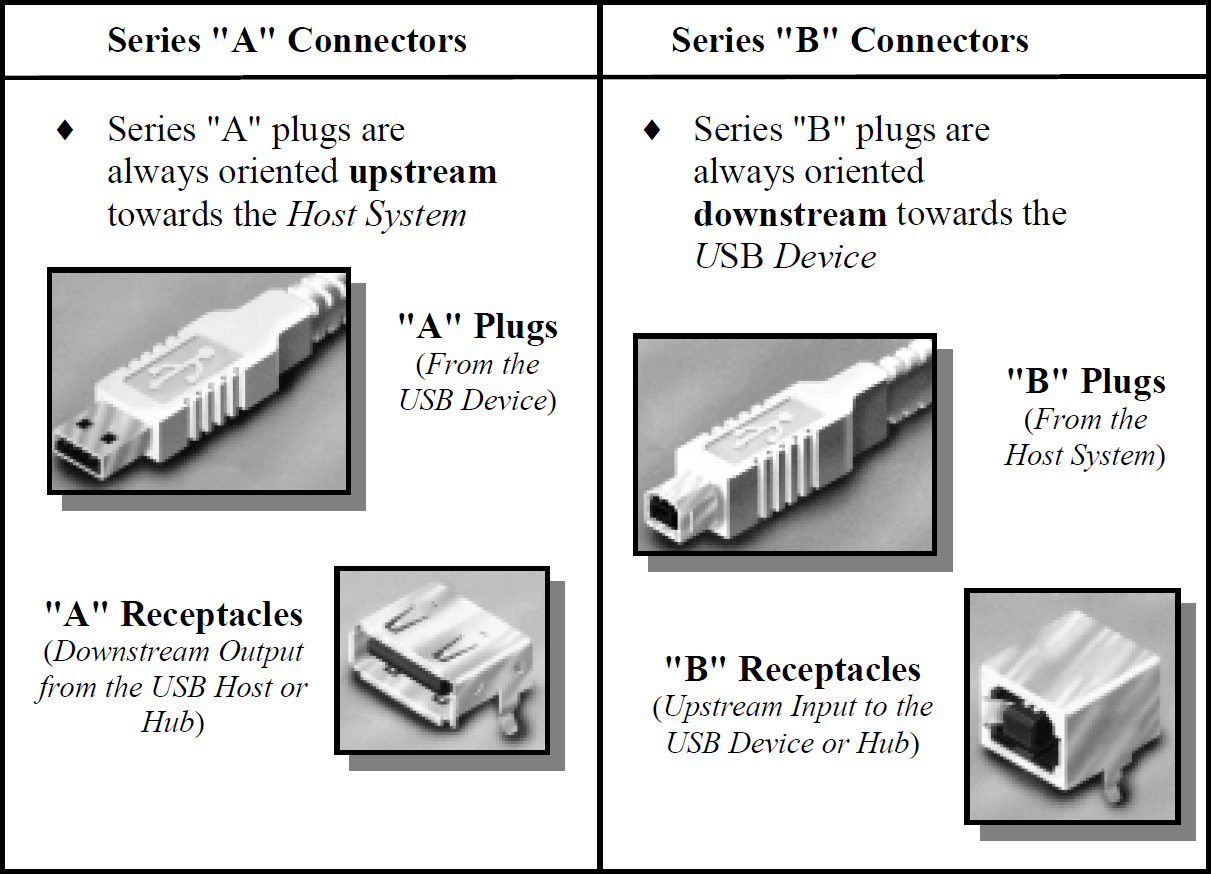
The USB Type-B Mystery
A few weeks ago, my colleagues and I were discussing something USB related (as we often do here) and we got on the topic of the USB type-B connectors. I was explaining to someone, they're those bulky square plugs one would typically see on a printer or other peripheral device. But that begged the question: why? What was the reason for needing this separate connector type? And why did we remember them being almost exclusively a printer thing?
While I did find a few forum discussions with conjecture here and there, I had to go digging through the USB 1.0 Specifications from a few decades ago to find the answer.
It turns out, the Implementer's Forum thinks us users couldn't be trusted! The purpose of USB "Standard-B Connector" was to prevent 'end user termination'. Put simply, they were afraid home users might get the cables mixed up and plug your computer into your computer or your printer into your printer. Understand that much of the motivation behind the creation of the USB had to do with creating an easy and accessible format, not just for manufacturers but especially for consumers.
We should note that the original USB cables had specified upstream and downstream connectors and could not necessarily be switched around. This is important because it meant that a USB cable could only run in a certain direction to begin with, meaning a distinct connector made a lot more sense at the time.

Type-B connectors are quickly becoming relics of an ending age but they've far outlasted their necessity. I would assert that this is a result of manufacturers balancing updates as best as possible over the years since people don't replace their printers nearly as quickly as the USB IF updates its specifications.